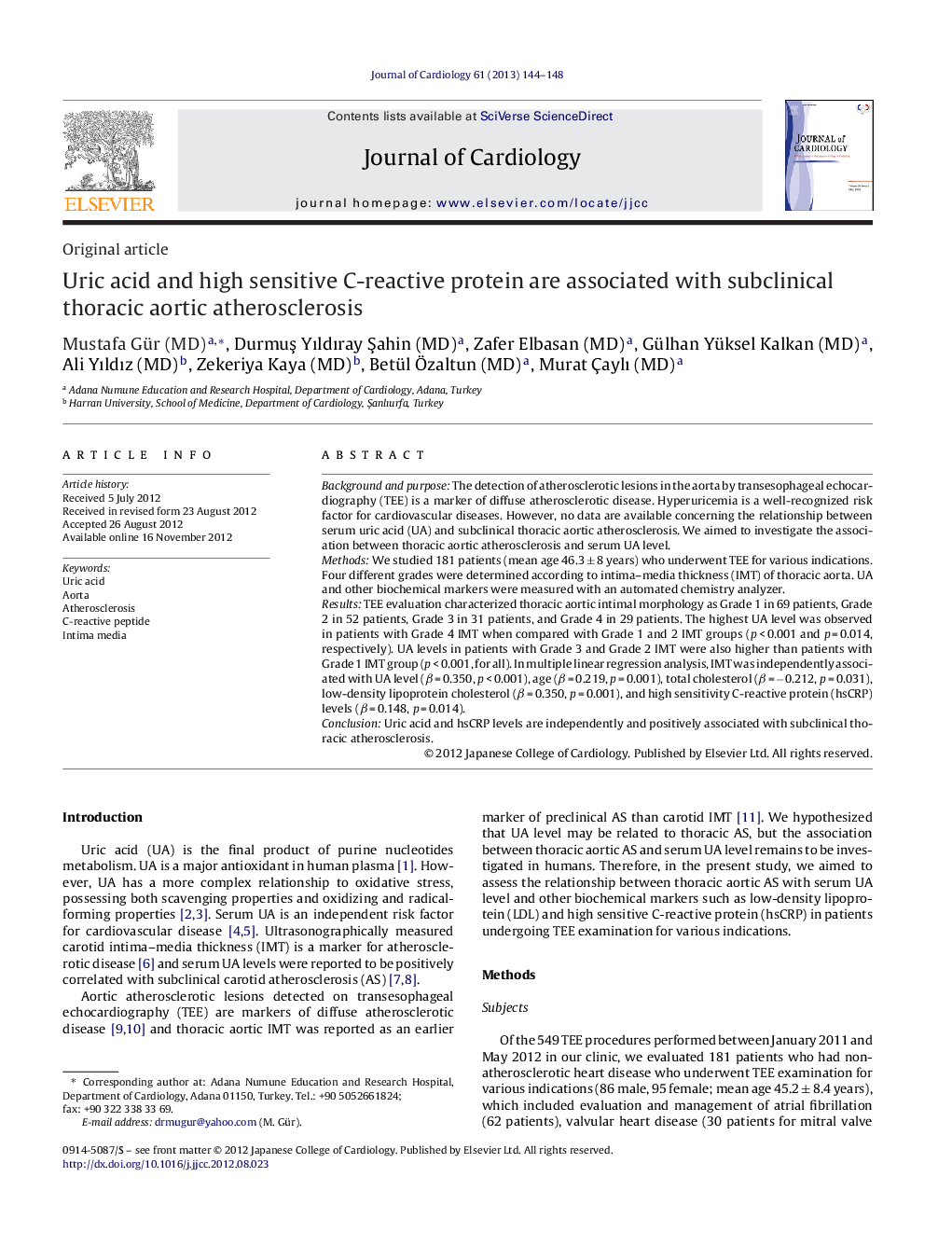| Article ID | Journal | Published Year | Pages | File Type |
|---|---|---|---|---|
| 5984221 | Journal of Cardiology | 2013 | 5 Pages |
Background and purposeThe detection of atherosclerotic lesions in the aorta by transesophageal echocardiography (TEE) is a marker of diffuse atherosclerotic disease. Hyperuricemia is a well-recognized risk factor for cardiovascular diseases. However, no data are available concerning the relationship between serum uric acid (UA) and subclinical thoracic aortic atherosclerosis. We aimed to investigate the association between thoracic aortic atherosclerosis and serum UA level.MethodsWe studied 181 patients (mean age 46.3 ± 8 years) who underwent TEE for various indications. Four different grades were determined according to intima-media thickness (IMT) of thoracic aorta. UA and other biochemical markers were measured with an automated chemistry analyzer.ResultsTEE evaluation characterized thoracic aortic intimal morphology as Grade 1 in 69 patients, Grade 2 in 52 patients, Grade 3 in 31 patients, and Grade 4 in 29 patients. The highest UA level was observed in patients with Grade 4 IMT when compared with Grade 1 and 2 IMT groups (p < 0.001 and p = 0.014, respectively). UA levels in patients with Grade 3 and Grade 2 IMT were also higher than patients with Grade 1 IMT group (p < 0.001, for all). In multiple linear regression analysis, IMT was independently associated with UA level (β = 0.350, p < 0.001), age (β = 0.219, p = 0.001), total cholesterol (β = â0.212, p = 0.031), low-density lipoprotein cholesterol (β = 0.350, p = 0.001), and high sensitivity C-reactive protein (hsCRP) levels (β = 0.148, p = 0.014).ConclusionUric acid and hsCRP levels are independently and positively associated with subclinical thoracic atherosclerosis.
